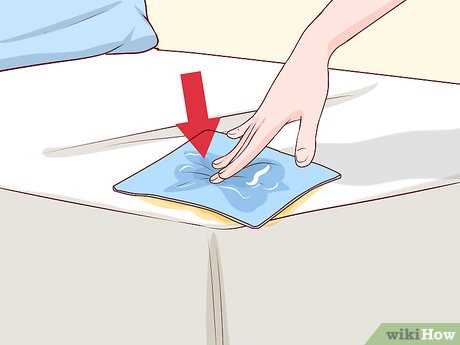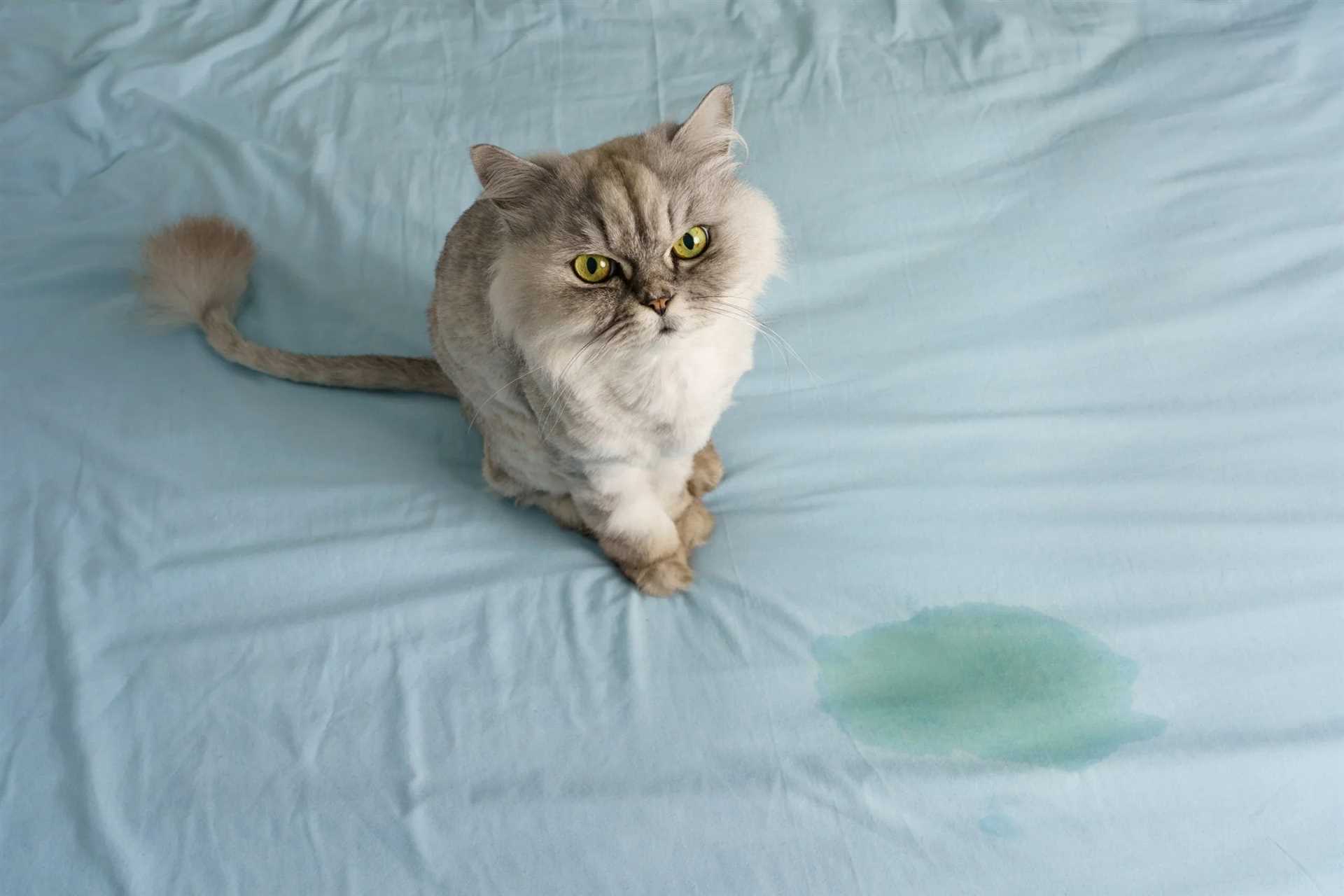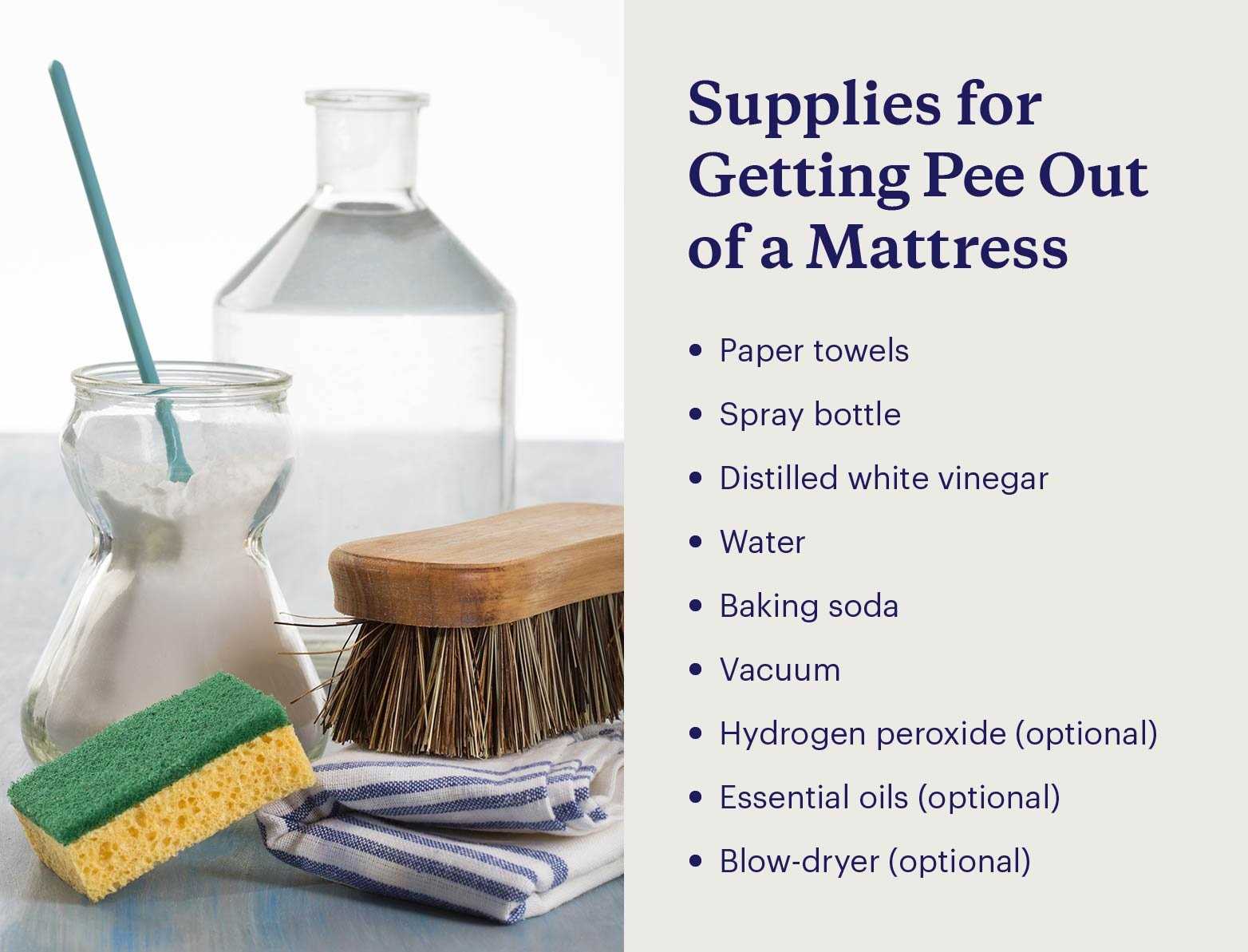

First, gather white vinegar, baking soda, and a spray bottle. Combine equal parts vinegar and water in the spray bottle. Lightly mist the affected area without soaking it. The acidity of the vinegar will neutralize the lingering odors.
Next, sprinkle a generous amount of baking soda over the dampened spot. This natural deodorizer will absorb any remaining scents while helping to lift stains. Allow it to sit for several hours, or ideally overnight, to maximize its effectiveness.
After the waiting period, vacuum the area thoroughly to remove the baking soda. Check if any residual odors persist. If so, repeat the process until the air is fresh again. This method is safe for most fabrics and provides a simple solution to a common issue.
Tips for Eliminating Unwanted Odor from Your Sleeping Surface
First, grab some baking soda. This magical powder is a natural deodorizer. Sprinkle a generous amount over the affected area and let it sit for at least 15 minutes. It absorbs the unpleasant aroma effectively.
Next, consider using white vinegar. Mix equal parts of water and vinegar in a spray bottle. Lightly mist the area, then blot with a clean cloth. The vinegar neutralizes the odor, leaving a fresher scent behind.
After treating with vinegar, apply an enzyme cleaner specifically designed for pet issues. Follow the instructions on the label, as these products break down the odor-causing substances and help prevent future occurrences.
For a final touch, consider using essential oils. A few drops of lavender or tea tree oil mixed with water in a spray bottle can add a pleasant fragrance while also having antibacterial properties.
Regular maintenance is key. To prevent future incidents, ensure your furry friend has access to appropriate spots for their needs. Also, keep a close eye on any changes in behavior that might indicate health issues.
If your companion requires additional care, you might want to check out the best eye wash for cats to keep them happy and healthy.
Identify the Source of the Odor
First, locate the exact area where the scent is strongest. This often indicates the point of contact. Gently press on the surface to check for wetness, as the liquid may seep in deeper than you realize.
Visual Inspection
Examine the fabric and seams closely. Look for any discoloration or staining, which can signify an issue. If your human has a black light, use it to reveal hidden spots, as these areas may not be visible in normal light.
Check Surroundings
Inspect nearby items, such as bedding or furniture, that might have absorbed the odor. Sometimes, the source isn’t where you expect it to be. Pay attention to any areas where I might have marked my territory, as those could also be contributors.
Once the precise locations are identified, targeted cleaning can follow. This makes the process more efficient and effective.
Choose the Right Cleaning Solution

Vinegar and water mixture works wonders. Combine equal parts of white vinegar and water in a spray bottle. This solution neutralizes odors effectively.
Baking soda is another great option. Sprinkle it generously over the affected area after using the vinegar solution. Let it sit for a few hours to absorb any lingering scents.
Enzymatic cleaners are specialized products that break down organic compounds. Look for those specifically designed for pet messes. Follow the instructions on the label for the best results.
Hydrogen peroxide can be used with caution. Mix it with water in a 1:1 ratio. Test a small area first to ensure it won’t bleach the fabric.
Always blot the area instead of rubbing to avoid spreading the fluid. Apply the chosen solution, allow it to sit, and then blot with a clean cloth.
Here’s a quick comparison of these solutions:
| Solution | Effectiveness | Safety |
|---|---|---|
| Vinegar & Water | High | Safe |
| Baking Soda | Moderate | Safe |
| Enzymatic Cleaner | High | Safe |
| Hydrogen Peroxide | Moderate | Test First |
Choosing the right cleaning solution is key to eliminating unpleasant odors effectively.
Apply the Solution and Let it Sit
After selecting the appropriate cleaning mixture, it’s time to treat the affected area. Generously apply the solution directly onto the stain, ensuring full saturation. This helps penetrate deep into the fibers, targeting the root of the issue.
Allow the treatment to rest for at least 15 to 30 minutes. This waiting period is crucial, as it gives the mixture adequate time to neutralize the lingering odors effectively. During this time, keep the area undisturbed to optimize results.
Check for Residue
After the waiting period, inspect the treated spot. If any residue remains, gently blot with a clean cloth to absorb excess moisture. Avoid rubbing, as this may push the mixture further into the material.
Rinse and Dry
Once the solution has been blotted, consider rinsing the area lightly with water to remove any remaining cleaning agent. Then, use a fan or open windows to ensure proper ventilation, aiding in the drying process. A completely dry surface is key to preventing any future odors.
Use a Wet Vacuum for Deep Cleaning
A wet vacuum is a powerful tool for addressing persistent odors in textiles. This device effectively extracts moisture and contaminants from deep within the fabric layers. Start by ensuring the area is prepped and the surface is dry. Then, apply your chosen cleaning solution to the affected regions.
Once the solution has soaked in for the recommended time, use the wet vacuum to pull out the liquid along with the odor-causing substances. Make several passes over the area to maximize extraction. If any residue remains, repeat the process until the area feels clean and fresh.
Final Steps

After using the vacuum, let the mattress air dry completely. To further enhance freshness, consider placing an eco-friendly deodorizer on the surface. For those looking for an eco-friendly option, check out the best eco washing machine ball for added benefits in your cleaning routine.
This combination ensures a thorough cleanse, leaving the fabric revitalized and free from unwanted scents.
Prevent Future Incidents with Training Tips

Start with consistent litter box training. Make sure the box is always clean and accessible. I prefer a quiet, private spot for my toilet. Regularly scoop out waste to keep it inviting.
Encourage positive behavior through rewards. Every time I use my box correctly, my human gives me treats and praises. This reinforces the good actions and makes me feel proud!
Address Stress and Anxiety
If I feel anxious, I might choose inappropriate places for my business. Provide cozy hiding spots and safe spaces where I can relax. Calming products, like pheromone diffusers, help create a tranquil environment.
Regular Vet Checkups

Schedule routine visits to the vet to rule out health issues that could lead to accidents. If something feels off, it’s better to catch it early. Staying healthy means fewer surprises for my human.
FAQ:
What are the best methods to remove cat urine smell from a mattress?
There are several effective methods to eliminate cat urine odor from a mattress. One popular approach involves using a mixture of white vinegar and water. Spray the solution onto the affected area and blot it with a clean cloth. Another method is to use baking soda, which can absorb odors. Sprinkle baking soda over the damp area, let it sit for several hours, and then vacuum it up. Enzymatic cleaners designed for pet stains are also very effective, as they break down the compounds in the urine that cause the smell.
How long does it take for the smell of cat urine to completely go away?
The time it takes for the cat urine smell to disappear can vary depending on the severity of the stain and the methods used to clean it. Typically, if you treat the stain promptly with vinegar or an enzymatic cleaner, the smell can diminish within a few hours. However, in some cases, it may take one to two days for the odor to be completely gone, especially if the urine has soaked deeply into the mattress material. Regularly airing out the mattress can also help speed up the process.
Can I use regular household cleaners to get rid of cat urine odor?
While some household cleaners may mask the odor temporarily, they often do not break down the urine compounds effectively. Products like bleach can damage the mattress and might not be safe for all fabrics. It is recommended to use enzymatic cleaners specifically formulated for pet odors, as they contain enzymes that target and neutralize the source of the smell. If you choose to use a household cleaner, make sure it is safe for fabric and does not contain harsh chemicals that could damage your mattress.
Is it safe to wash my mattress in the washing machine?
Most mattresses are not designed to be washed in a washing machine. Doing so can damage the materials and affect the mattress’s support and comfort. Instead, focus on spot cleaning the affected area using a cloth and a suitable cleaner. If the mattress cover is removable and machine washable, check the care instructions on the label. When cleaning a mattress, always use minimal moisture to avoid mold and mildew growth.
What preventative measures can I take to avoid cat urine accidents on my mattress?
To prevent cat urine accidents, consider providing your cat with a designated litter box that is easily accessible. Keeping the litter box clean and placing it in a quiet area can encourage your cat to use it. Additionally, you may want to use waterproof mattress protectors, which can help shield your mattress from any potential accidents. Ensuring your cat is healthy and stress-free can also reduce the likelihood of inappropriate urination, so regular vet check-ups and a stable environment are important.









